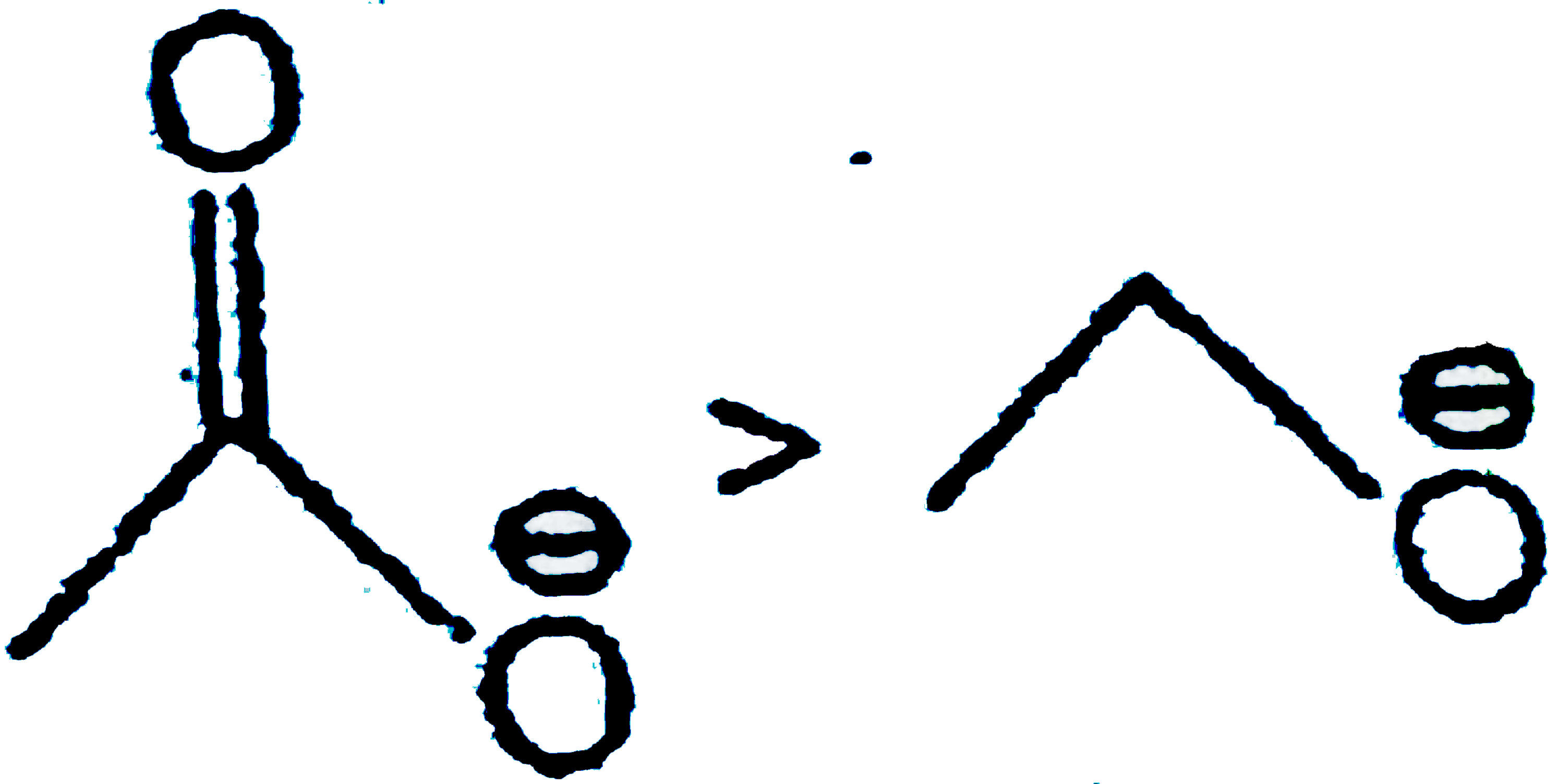The order of leaving group ability is
.−OAc(I).−OMe(II).−SO3Me(III).−SO3CF3(IV) The order of leaving group ability is
I>II>III>IV
IV>III>II>I
I>III>IV>II
IV>III>I>II
The correct Answer is:D
To determine the order of leaving group ability among the given groups, we need to analyze the stability of the leaving groups after they depart. The more stable the leaving group is after it leaves, the better it is as a leaving group.
1. Identify the Leaving Groups:
The groups we are comparing are:
- (I) OAc⁻ (Acetate)
- (II) OMe⁻ (Methoxide)
- (III) SO₃Me⁻ (Methanesulfonate)
- (IV) SO₃CF₃⁻ (Trifluoromethanesulfonate)
2. Analyze the Stability of Each Leaving Group:
- (IV) SO₃CF₃⁻: The trifluoromethyl group (CF₃) is highly electronegative and can stabilize the negative charge through inductive effects. Thus, this group is very stable after leaving.
- (III) SO₃Me⁻: The methyl group (Me) is less electronegative than CF₃, but the sulfonate group (SO₃) still provides good stabilization of the negative charge. Therefore, it is a good leaving group, but not as good as SO₃CF₃.
- (I) OAc⁻: The acetate ion can stabilize the negative charge through resonance, but it is less stable than the sulfonate groups due to the lack of strong electron-withdrawing groups.
- (II) OMe⁻: The methoxide ion is the least stable of the four because the negative charge is localized on the oxygen without significant resonance or inductive stabilization from electronegative groups.
3. Rank the Leaving Groups:
Based on the stability of the leaving groups after they leave, we can rank them:
- (IV) SO₃CF₃⁻ > (III) SO₃Me⁻ > (I) OAc⁻ > (II) OMe⁻
4. Final Order of Leaving Group Ability:
The order of leaving group ability is:
- SO₃CF₃⁻ > SO₃Me⁻ > OAc⁻ > OMe⁻
Conclusion:
The correct order of leaving group ability is:
(IV) > (III) > (I) > (II)
The groups we are comparing are:
- (I) OAc⁻ (Acetate)
- (II) OMe⁻ (Methoxide)
- (III) SO₃Me⁻ (Methanesulfonate)
- (IV) SO₃CF₃⁻ (Trifluoromethanesulfonate)
- (IV) SO₃CF₃⁻: The trifluoromethyl group (CF₃) is highly electronegative and can stabilize the negative charge through inductive effects. Thus, this group is very stable after leaving.
- (III) SO₃Me⁻: The methyl group (Me) is less electronegative than CF₃, but the sulfonate group (SO₃) still provides good stabilization of the negative charge. Therefore, it is a good leaving group, but not as good as SO₃CF₃.
- (I) OAc⁻: The acetate ion can stabilize the negative charge through resonance, but it is less stable than the sulfonate groups due to the lack of strong electron-withdrawing groups.
- (II) OMe⁻: The methoxide ion is the least stable of the four because the negative charge is localized on the oxygen without significant resonance or inductive stabilization from electronegative groups.
Based on the stability of the leaving groups after they leave, we can rank them:
- (IV) SO₃CF₃⁻ > (III) SO₃Me⁻ > (I) OAc⁻ > (II) OMe⁻
The order of leaving group ability is:
- SO₃CF₃⁻ > SO₃Me⁻ > OAc⁻ > OMe⁻
The correct order of leaving group ability is:
(IV) > (III) > (I) > (II)
Topper's Solved these Questions
Similar Questions
Knowledge Check
The order of leaving group ability is
.−OAc(I).−OMe(II).−SO3Me(III).−SO3CF3(IV) The order of leaving group ability isAI>II>III>IVBIV>III>II>ICI>III>IV>IIDIV>III>I>IIThe correct leaving group ability order is :
AɵOH>H2OBɵOH>ɵSHC DɵCI>ɵI
DɵCI>ɵICorrect order for N-O bond length in the given species is
NOINO+IINO−2IIINO−3IVAI<II<III<IVBII<I<III<IVCII<III<IV<IDI<III<IV<II
Correct order of leaving group ability for SN2 reaction is :
View SolutionCorrect order of leaving group
ability for SN2 reaction is :
View SolutionIn the following groups:
(I) −OAc, (II) −OMe, (III) −OSO2Me, (IV) OSO2CF3 the order of leaving group ability is-
View SolutionIn the following group :
−OAc(I),−OMe(II),−OSO2(III),−OSO2CF3(IV)
The order of leaving group ability is :
View SolutionArrange the following in decreasing order of stability.
Cl−(I),RCOO−(II),OH−(III),RO−(IV),N(V)H−2
View Solution
